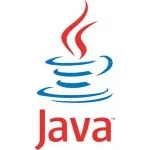Vavr: Bringing Functional Programming to Java
In recent years, Java has evolved to incorporate more modern programming paradigms, with functional programming (FP) becoming a central focus. Vavr (formerly known as Javaslang) is one of the leading libraries in the Java ecosystem that introduces functional programming features to enhance the language’s capabilities. By leveraging Vavr, Java developers can adopt a functional approach to handling collections, errors, and concurrency, making their applications more robust, concise, and easier to maintain.
1. What is Vavr?
Vavr is a functional programming library for Java that brings immutable data structures, functional patterns, and other FP features to the language. Vavr aims to make Java code more expressive, less error-prone, and easier to reason about by providing alternatives to traditional Java constructs. With Vavr, developers can work with immutable collections, monads (such as Option, Try, and Future), and other FP patterns to reduce side effects, increase performance, and simplify code.
2. Key Features of Vavr
1. Immutable Collections
Vavr introduces immutable collections to Java, offering a safer way to manage data. Immutable data structures ensure that once an object is created, it cannot be altered, which helps eliminate the risks of concurrency bugs or accidental data modifications. Collections like List, Set, Map, and Queue are available in Vavr, providing a functional alternative to Java’s mutable collections.
For example, a List in Vavr can be defined and used as follows:
1 2 3 4 | import io.vavr.collection.List;List<Integer> numbers = List.of(1, 2, 3, 4, 5);List<Integer> updatedNumbers = numbers.append(6); // Returns a new list |
The original list remains unmodified, which is the essence of immutability in functional programming.
2. Try: Simplifying Error Handling
One of the major advantages of functional programming is handling errors in a declarative way. Try is a Vavr monad that helps handle exceptions without relying on try-catch blocks. It allows developers to encapsulate code that can potentially throw an exception in a functional style, and provides methods to handle both success and failure.
Here’s an example of using Try to handle potential errors:
1 2 3 4 5 | import io.vavr.control.Try;Try<Integer> result = Try.of(() -> Integer.parseInt("123"));result.onSuccess(value -> System.out.println("Parsed value: " + value)) .onFailure(ex -> System.out.println("Error: " + ex.getMessage())); |
In this example, instead of using a try-catch block, Vavr’s Try monad allows the developer to handle success and failure in a clean, functional manner, providing improved readability and better error management.
3. Option: Safe Null Handling
Null pointer exceptions are a common source of runtime errors in Java applications. Option is a Vavr monad that helps mitigate null pointer exceptions by representing a value that can either be Some (a valid value) or None (a missing value). This concept is central in functional programming, and Vavr brings it to Java to make working with optional values easier and safer.
Here’s how Option works:
1 2 3 4 5 6 7 8 | import io.vavr.control.Option;Option<String> name = Option.of("John");name.map(n -> "Hello, " + n) .forEach(System.out::println); // Outputs: Hello, JohnOption<String> emptyName = Option.none();emptyName.getOrElse("No name provided"); // Outputs: No name provided |
With Option, the code becomes more expressive and removes the need for manual null checks, reducing the chances of runtime errors.
4. Future: Handling Asynchronous Operations
Functional programming emphasizes immutability and lazy evaluation, and Vavr extends this to asynchronous operations with the Future monad. This allows developers to handle concurrency in a more declarative manner, without relying on complex thread management or callback hell.
Here’s an example of using Future to handle asynchronous tasks:
1 2 3 4 5 6 7 8 9 | import io.vavr.concurrent.Future;Future<Integer> future = Future.of(() -> { Thread.sleep(1000); return 42;});future.onSuccess(result -> System.out.println("The answer is: " + result)) .onFailure(ex -> System.out.println("Error: " + ex.getMessage())); |
Future simplifies asynchronous programming by allowing developers to chain success and failure callbacks and manage concurrency in a functional way.
3. How Vavr Simplifies Java Applications
1. Error Handling
Traditional error handling in Java relies heavily on try-catch blocks and exception propagation. Vavr simplifies error handling through monads like Try and Either, making the code more declarative and eliminating the need for verbose exception management. This makes the application logic more robust and easier to maintain.
2. State Management
State management in Java can be cumbersome and error-prone, especially when using mutable state. Vavr’s immutable collections and functional constructs allow developers to manage state in a more predictable and maintainable way, minimizing side effects.
3. Concurrency and Asynchronous Programming
Managing concurrency in Java often requires using complex APIs like ExecutorService, CompletableFuture, or third-party libraries. With Future and other Vavr monads, developers can handle asynchronous operations in a clean, functional style, reducing the boilerplate and complexity associated with concurrency.
4. Real-World Use Cases of Vavr
- Financial Applications: In banking or trading applications, where precise and reliable error handling is crucial, Vavr’s
Trymonad provides an elegant solution to handle complex financial transactions without cluttering the code with error-pronetry-catchblocks. - Web Development: When building web applications, especially RESTful APIs, Vavr can simplify response handling with
OptionandEither. For instance, returningOptionfor missing or optional data makes the codebase cleaner and less prone to runtime exceptions. - Data Processing Pipelines: For applications that process large volumes of data, Vavr’s functional constructs like
Map,Filter, andReducecan make data transformations more expressive, concise, and easier to test.
5. Conclusion
Vavr brings the power of functional programming to Java, enabling developers to build more expressive, maintainable, and error-resistant applications. By introducing features like immutable collections, Try, Option, and Future, Vavr provides Java developers with the tools to embrace functional programming paradigms without abandoning the JVM ecosystem. With its clean syntax, enhanced error handling, and simplified concurrency, Vavr is a valuable tool for any Java developer seeking to build modern, efficient applications.
If you’re ready to dive into Vavr and explore functional programming in Java, here’s a helpful YouTube video on Vavr Basics.



